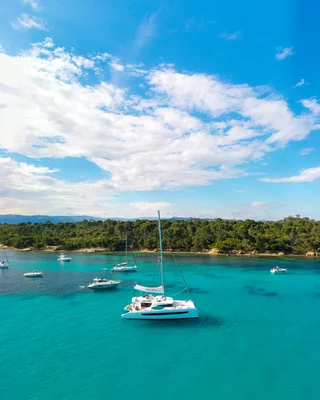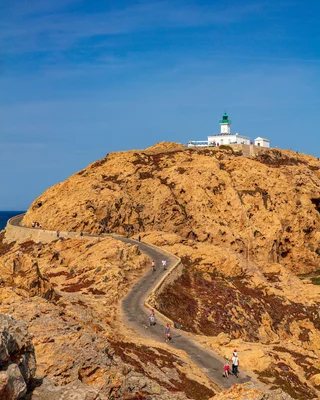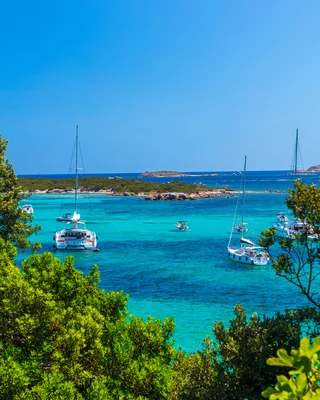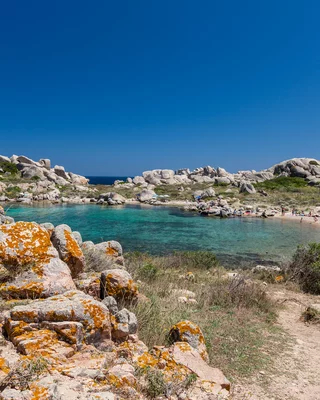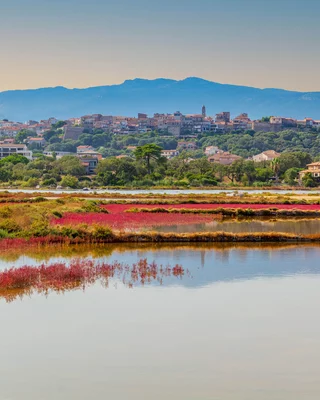The history of the Corsican flag
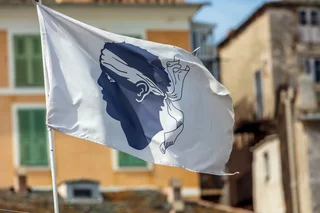
The story of the Corsican flag, the source of many legends, has yet to unveil its mystery, adding to the island's charm! The Corsican flag, with its Moorish head or "Testa Mora", is part of the island's identity, of which its inhabitants are very proud.
In this article, we'll share with you some of the best-known stories about the origins of the Corsican flag. It's up to you to draw your own conclusions, and above all... Happy reading!
What is the origin of the legend and symbol of the Moor's head, testa mora?
It has its origins in Corsican history, when Corsican warriors had to defend themselves against the lightning raids of the Saracens in the year 704. Every enemy killed was decapitated and its head impaled on spikes.
According to legend, this is the story of Diana, a young girl kidnapped by a cruel Saracen chieftain and sold into slavery to the king. Her fiancé vowed to rescue her and set off for the town of Aléria. What followed was a terrible hand-to-hand battle between the inhabitants of Aléria and the Moors. To discourage the invaders and celebrate their victory, the inhabitants put the head of the Moorish chief on a stake and paraded it from village to village.
Another alleged origin, but this time the story takes place in the 16th century, when Corsica belonged to King Philip II of Spain. As each possession had to have an official emblem, it was the Italian geographer Mainaldi Galerati who proposed using the coat of arms of Sardinia, with a Moor's head instead of four heads.
To return to the facts, the Corsican flag with the Moor's head was not formalized until independence in the 18th century. It is considered one of the oldest flags in Europe!

Immerse yourself in Corsican history with Corsicatours! Discover Corsican history, traditions and culture in a different way, with one of our tailor-made tours. A holiday full of promises, discoveries and anecdotes for unforgettable memories on the Isle of Beauty.
Who is the man on the Corsican flag?
The Moor is a Saharan who lives mainly in Mauritania. The image of his decapitated head was intended to intimidate opponents.
Few people know this, but originally, the Moor's head wore a blindfold over his eyes, not on his forehead as is the case today. While some believe this change was made by Corsican army general Ghjuvan Petru Gaffori, for whom "Corsica will finally be able to open its eyes", others claim it was Pascal Paoli who made the change. Historians interpret this gesture as a symbol of the abolition of Genoese domination.
One of the great men of Corsica, Pascal Paoli "redesigned" the Corsican flag by removing the earrings and collar and introducing the white flag, which would become theofficial emblem of the Corsican nation.
In more distant times, it was in the Middle Ages that the "Moor's head" made its appearance, during the Aragonese period in 1281, on a seal of King Peter III of Aragon. Following the Aragonese kingdom's domination of Corsica, this symbol was adopted. The famous King of Aragon's staircase in Bonifacio is a reminder of this period!
A mystery that remains unresolved and contributes to the rebellious image of the Isle of Beauty! Follow in the footsteps of great men through Corsica's major cities, and be sure to visit the town of Bonifacio during your tour.

Our local experts answer your questions!
Why do Corsica and Sardinia have the same flag?
Corsica and Sardinia share a similar flag due to their past under the control of the Republic of Genoa. This flag, the "Cross of Saint George", consisting of a red cross on a white background, has influenced the emblems of both islands. The Corsican flag adds a Moorish head, while that of Sardinia is almost identical to that of Genoa. So, although the two islands have distinct histories, their common flag reflects their past under Genoese rule.

